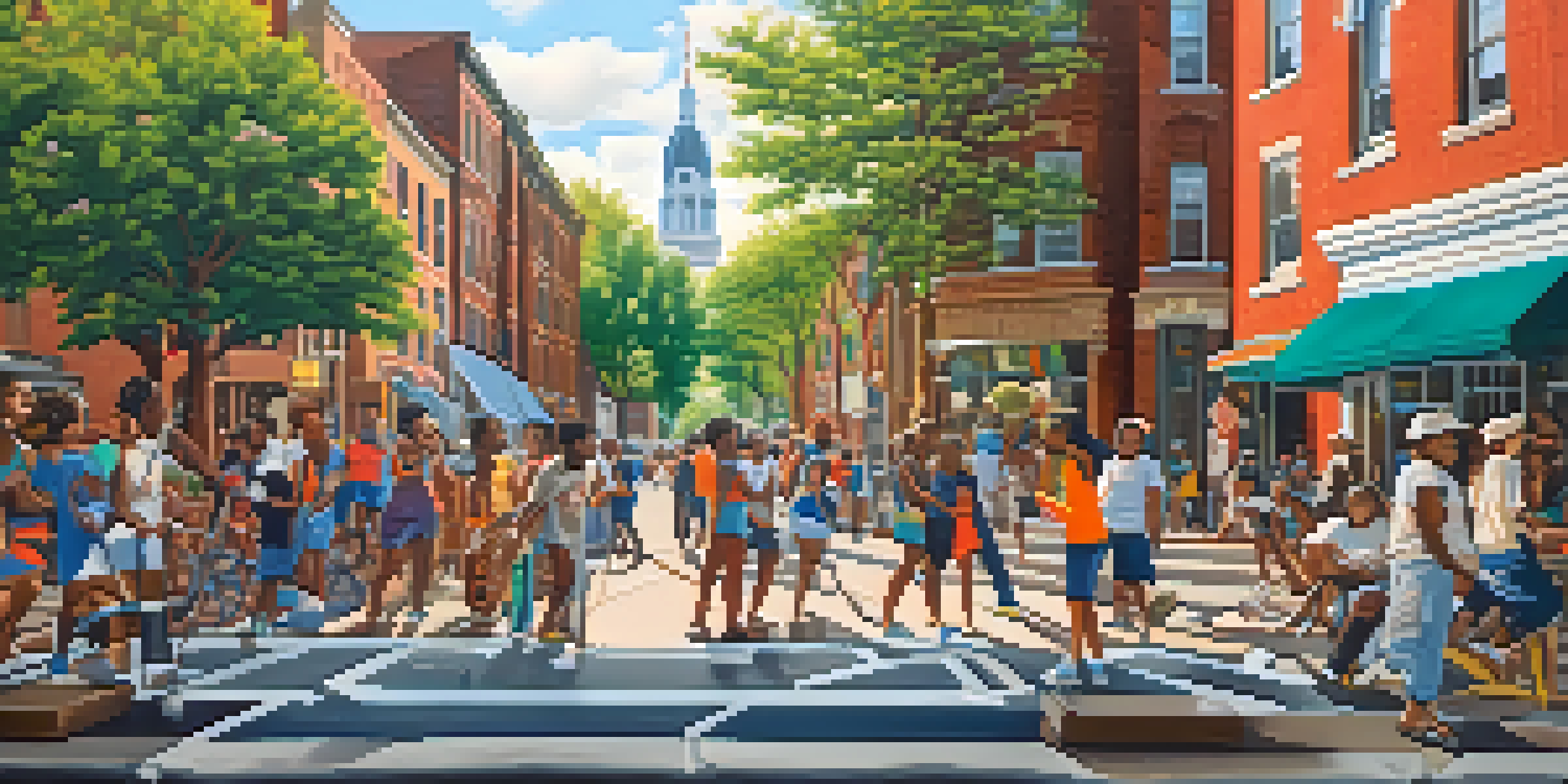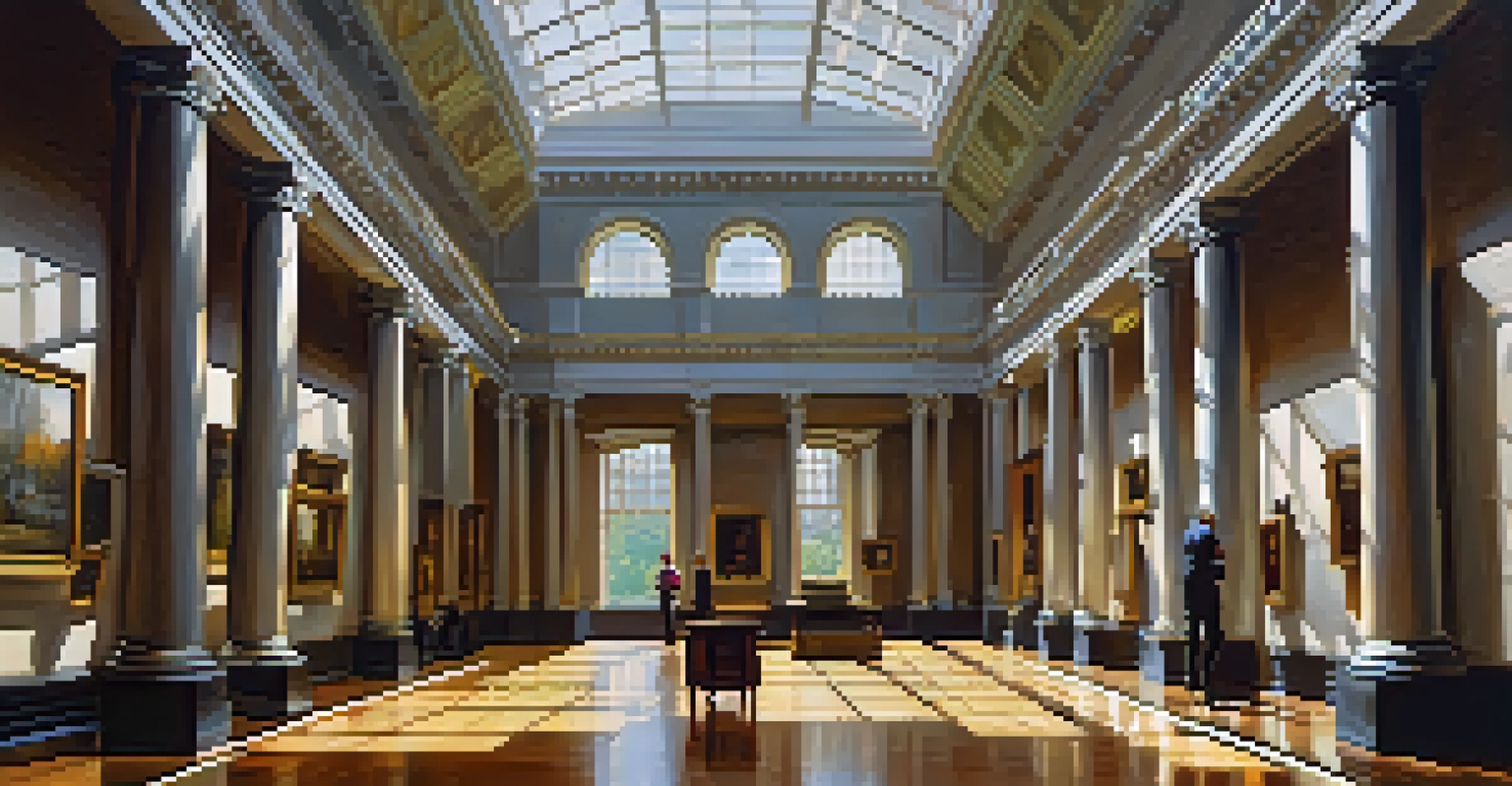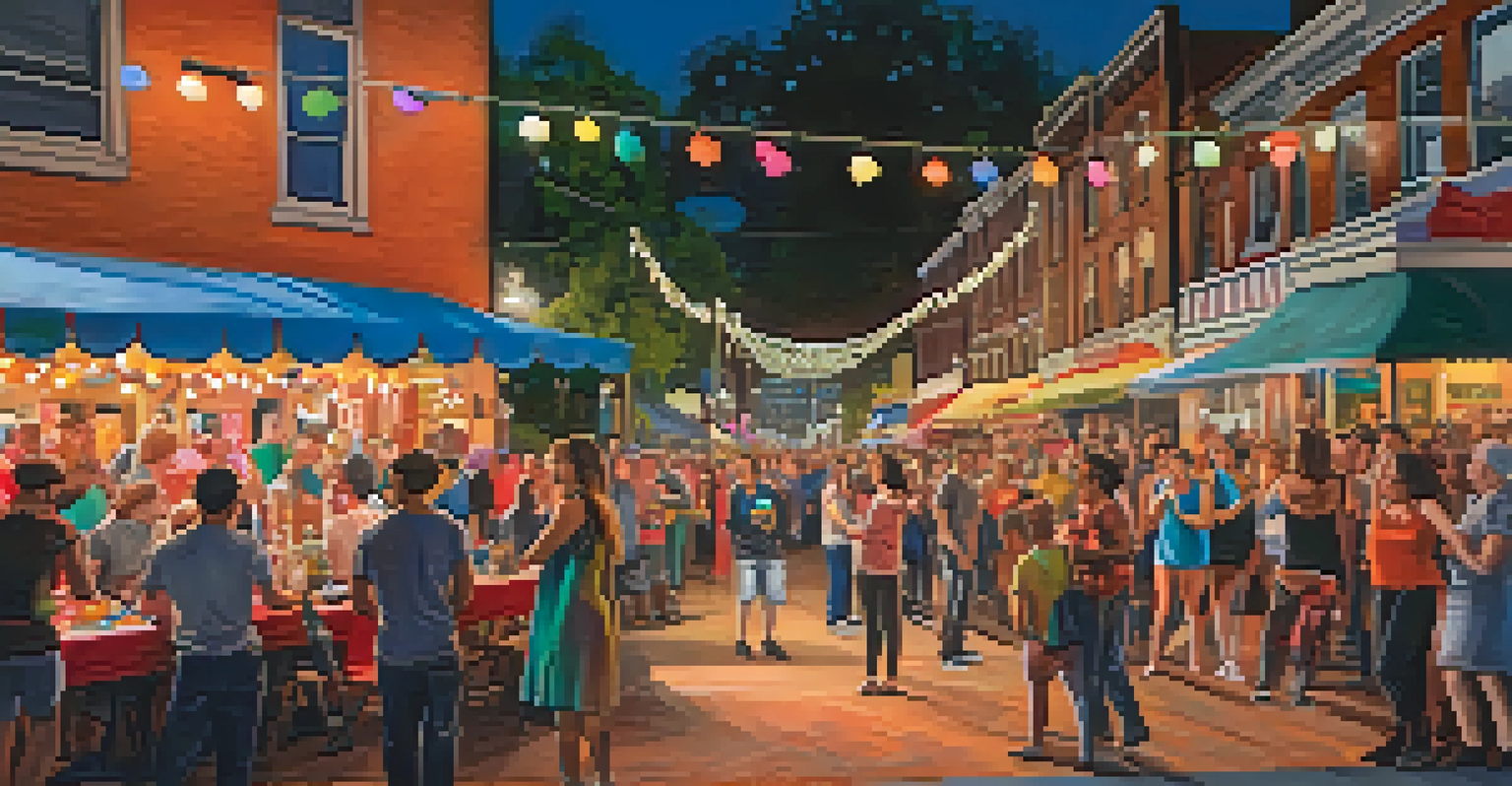Historic Contributions of Philadelphia to American Art

The Birthplace of American Art Movements
Philadelphia has long been a cradle for various American art movements, beginning in the 18th century. The city nurtured notable artists who would go on to shape the landscape of American art, such as Charles Willson Peale and Thomas Eakins. Their works, rooted in realism, focused on capturing the human experience and the American spirit.
Art enables us to find ourselves and lose ourselves at the same time.
The Pennsylvania Academy of the Fine Arts, established in 1805, became a pivotal institution in fostering artistic talent. It provided a platform for emerging artists and promoted a distinct American style during a time when European influences were dominant. This emphasis on homegrown talent laid the groundwork for future movements, ultimately leading to modern expressions of art.
As the city evolved, so did its artistic contributions, influencing movements such as the Ashcan School, which depicted everyday life in urban settings. This commitment to portraying the American experience has left an indelible mark on the country’s art narrative.
Influential Art Institutions and Galleries
Philadelphia is home to several prestigious art institutions that have played a significant role in shaping the American art scene. The Pennsylvania Academy of the Fine Arts is not only the oldest art school in the United States but also a leading museum showcasing American art. Its collections represent the evolution of art from the 18th century to contemporary pieces.

In addition to the Academy, the Philadelphia Museum of Art has been instrumental in promoting both local and international artists. With an extensive collection that spans centuries and continents, it serves as a vital resource for art education and appreciation. The museum’s iconic steps have even become a symbol of the city’s cultural heritage.
Philadelphia: Cradle of Art Movements
The city has been a nurturing ground for significant American art movements since the 18th century, influencing artists and styles that shape the national narrative.
These institutions have not only preserved art history but also encouraged innovation, creating opportunities for artists to exhibit their work and engage with the community. Their commitment to education and outreach has significantly impacted public perception of art in Philadelphia.
The Role of Public Art in Philadelphia
Public art in Philadelphia reflects the city’s rich history and vibrant culture, transforming urban spaces into open-air galleries. Murals, sculptures, and installations can be found throughout the city, telling stories that resonate with both residents and visitors. The Mural Arts Program, established in 1984, has become one of the largest public art programs in the country.
Every artist was first an amateur.
The program not only beautifies neighborhoods but also engages local communities in the artistic process. It empowers artists to collaborate with residents, fostering a sense of ownership and pride in their surroundings. This community-driven approach has made public art a vital part of Philadelphia's identity.
Moreover, public art serves as a conversation starter, addressing social issues and celebrating diversity. By incorporating varying perspectives and experiences, Philadelphia’s public art scene enriches the cultural dialogue and invites everyone to participate.
Key Artists Who Shaped Philadelphia's Art Scene
Throughout its history, Philadelphia has been home to numerous artists who made significant contributions to American art. One of the most prominent figures is Thomas Eakins, known for his realistic portrayals of the human form and dedication to artistic education. His influence can still be seen in contemporary art practices today.
Another notable artist is Mary Cassatt, who is celebrated for her intimate depictions of women and children. As a prominent member of the Impressionist movement, she brought a unique perspective to the art world, emphasizing the importance of personal experiences. Her work continues to inspire new generations of artists.
Impact of Public Art Initiatives
Programs like the Mural Arts Program not only beautify the city but also engage communities, making public art a central part of Philadelphia's identity.
Additionally, contemporary artists like David Lynch and Ana Teresa Fernández have emerged from Philadelphia, pushing boundaries and expanding the definition of art. Their innovative approaches reflect the city’s ongoing commitment to artistic exploration and expression, ensuring that Philadelphia remains a significant player in the American art landscape.
Art Festivals and Events Celebrating Creativity
Philadelphia hosts a variety of art festivals and events that celebrate the city’s creative spirit. One of the most notable is the Philadelphia Fringe Festival, which showcases performance art, theater, and visual arts from local and international artists. This annual event allows for creative experimentation and encourages artists to push their limits.
Another key event is the Philadelphia Open Studio Tours, where artists open their workspaces to the public. This initiative fosters connections between artists and the community, allowing visitors to experience the art-making process firsthand. It promotes local talent and encourages dialogue about the importance of art in everyday life.
These festivals not only highlight Philadelphia’s artistic diversity but also contribute to the local economy. They attract visitors and stimulate interest in the arts, solidifying Philadelphia's reputation as a thriving hub for creativity and innovation.
The Impact of Philadelphia's Art on National Trends
Philadelphia's artistic contributions extend far beyond its borders, influencing national trends in art and culture. The city has been a breeding ground for innovative ideas that have shaped movements like American Impressionism and Social Realism. Artists from Philadelphia often led the charge, showcasing how art can address societal issues and reflect the human condition.
Moreover, Philadelphia's art institutions have served as a model for similar organizations across the country. Their commitment to education, accessibility, and community engagement has inspired other cities to invest in their local art scenes. This ripple effect has helped elevate the status of American art on a global scale.
Festivals Celebrating Artistic Diversity
Events such as the Philadelphia Fringe Festival and Open Studio Tours showcase local talent, foster community connections, and bolster the city’s reputation as a creative hub.
As a result, Philadelphia remains a key player in the national conversation about art, culture, and identity. Its contributions continue to resonate, reminding us of the importance of creativity in shaping our understanding of the world.
Preserving Philadelphia's Artistic Heritage
Preserving Philadelphia's rich artistic heritage is vital for future generations to appreciate and learn from. Institutions like the Philadelphia Museum of Art and the Pennsylvania Academy of the Fine Arts actively work to conserve important works and artifacts. Their efforts ensure that the history of Philadelphia’s art scene is documented and celebrated.
Additionally, community organizations play a crucial role in preserving local art traditions. By supporting local artists and promoting cultural initiatives, these organizations help maintain the unique character of Philadelphia’s artistic landscape. They serve as guardians of the city’s artistic legacy, ensuring it thrives for years to come.

As Philadelphia continues to evolve, the importance of preserving its artistic heritage cannot be overstated. By valuing and protecting its cultural contributions, the city honors its past while inspiring future creativity and innovation.